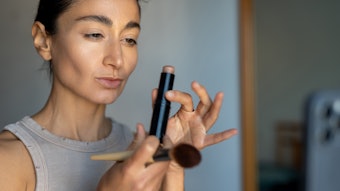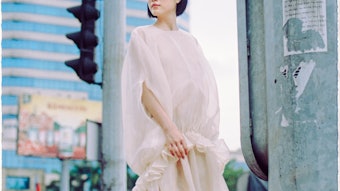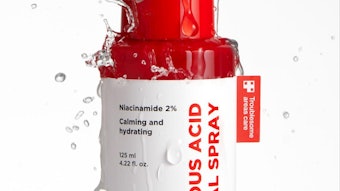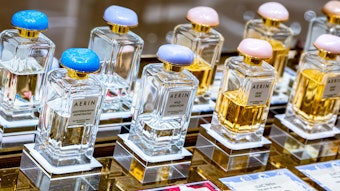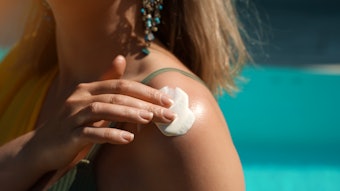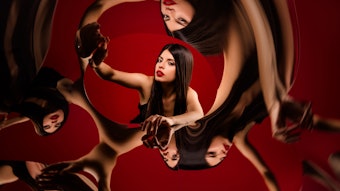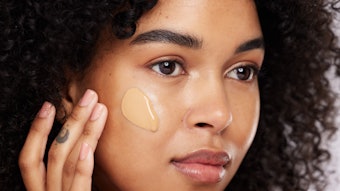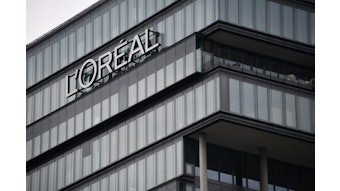StoryScore is a new quantitative measure of storytelling that fits into a brand’s social management dashboard alongside more traditional popularity-based measures such as “likes” and “shares.”
The StoryScore metric is based on creativity, strategy and personality to give brands a more meaningful understanding of how well their social content is performing. StoryScore also allows brands to create stronger social brand narratives that reinforce the themes and messages being communicated on other channels.
Study Methodology
Ten beauty brands that represent a cross-section of cosmetic and skin care brands were selected: Aveda, Clinique, Cover Girl, Dove, Kiehl’s, MAC, Maybelline, Olay, Too Faced and Urban Decay.
Brand Chorus, which developed StoryScore, analyzed every post made by each brand between October 1 and October 31, 2014 on Facebook, Twitter, Instagram and YouTube.
In total, 1,152 posts (224 Facebook posts, 630 Twitter posts, 275 Instagram posts and 23 YouTube videos) were analyzed. Only content that is created by the brands is included in the analysis—shares or retweets that don’t have commentary from the brand or direct responses to consumers in the analysis were not include.
Each individual post is analyzed based on factors such as tone of voice, creativity, use of video/imagery, and how the post fit with brand and business strategy. This analysis is then used as a foundation to calculate a StoryScore using a proprietary algorithm. Results were as follows:
Scores and Ranking: Rank/Brand/StoryScore
- 1/MAC/84
- 2/Urban Decay/83
- 3/Dove/72
- 4/Too Faced/71
- 5/Aveda/69
- 6/Kiehl’s/60
- 7/Clinique/56
- 8/Cover Girl/55
- 9/Olay/45
- 10/Maybelline/39
Top Level, General Findings
- All brands posted content on Facebook, Twitter and Instagram. Eight out of the 10 brands posted content on YouTube, with the exception of CoverGirl and Too Faced.
- A high volume of posts looks good on a traditional social media dashboard, but it is not necessarily an indicator of success when it comes to social media storytelling. In fact, three out of the five most prolific posters (Clinique, CoverGirl and Maybelline) all have StoryScores below 60, suggesting that they are producing a large amount of content that has a very small impact on building brand equity.
- Images tell a powerful story in the beauty category, so it’s not surprising that two out of the top five brands (MAC and Too Faced) use Instagram as their main social media channel. By contrast, the bottom half of the StoryScore Index all use Twitter as their main channel.
- Images that provide beauty inspiration or education/information (tips, how-to’s, backstage shots) are typically more impactful and do a better job of reinforcing a brand story than straightforward product shots. Unfortunately, many of the brands in the study are still using product shots (often without people) as their main source of images.
- Brand Chorus has seen across other categories that brands with a clear, well-defined mission tend to have higher StoryScores. For this reason, we were not surprised to see Dove and Aveda among the top five brands.
Study Highlights by Brand: Rank, Brand, Score & Comments
- 84: Instagram is the main social channel for MAC, accounting for 45% of all posts in October 2014. Instagram is ideal for showcasing images relating to Fashion Week and other fashion/beauty shows, accounting for 43% of all MAC’s posts.
- 83: Urban Decay made more Facebook posts than any other brand in the study, and Facebook accounts for 37% of the brand’s social media posts. Almost one in five Urban Decay posts are a beauty tip or tutorial.
- 72: Dove relies heavily on Twitter, tweeting 58% of all its social content. The brand has not embraced Instagram, posting only six images during the period of the study. The Dove brand theme of self-esteem and real beauty comes through strongly on social media, accounting for 42% of all posts.
- 71: Too Faced made more Instagram posts than any other brand in the study. Too Faced has a warm, approachable tone of voice, and does a good job of posting about product reviews/awards or showcasing feedback from consumers. This type of post accounts for 15% of all social content for Too Faced
- 69: Twitter accounts for 60% of all Aveda’s social content. Aveda makes more cause-related posts than any other brand in the study, and also posts more about stylists/shows than any other brand except MAC. Unfortunately, Aveda also posts a lot of open-ended questions (such as “are your Halloween costumes recyclable?”) that negatively impacted the brand’s overall StoryScore.
- 60: Kiehl’s has the lowest number of combined fans/followers across all brands in the study, and also made the least number of posts (an average of two a day). While several of Kiehl’s stronger posts focused on skin benefits or brand stories, the dominant theme was a sweepstakes that accounted for 24% of all posts.
- 56: The dominant platform for Clinique is Twitter, which accounts for 60% of all social content. The most frequent theme across all social channels was related to an eight-piece gift promotion, which accounted for 22% of all posts.
- 55: CoverGirl was the most active brand on social media, with an average of seven posts a day. Twitter dominates CoverGirl’s social activity, accounting for 78% of all content. CoverGirl makes more celebrity-related posts than any other brand in the study, and shows more product shots (without models) than any other brand. Posts promoting products account for 41% of all CoverGirl posts.
- 45: Olay is one of the least active brands on social media, with an average of two posts a day. Olay posted more videos to YouTube than any other brand in the study, but Twitter was still the dominant platform (60% of all posts). Posts relating to Oprah’s The Life You Want Tour (sponsored by Olay) accounted for 22% of all social content.
- 39: Twitter accounts for 61% of all Maybelline’s social content. Maybelline has a distinctive tone of voice (addressing fans/followers as “pretties”), and makes a strong connection to the brand’s roots in New York in several posts. However, Maybelline’s StoryScore is negatively impacted by “generic” posts such as “Just keep the coffee flowing” or “I want it to be Friday night” that account for over 20% of all social content.
Martyn Tipping is CEO, Brand Chorus, the social business intelligence practice of brand consultancy TippingGardner, and home of StoryScore. Prior to founding TippingGardner in 2000, Tipping was director of verbal branding at Landor Associates, New York where he led branding programs for a wide array of clients, including Delta Air Lines, United Cerebral Palsy, Motorola, Xerox, AT&T and Ford Motor Company. Tipping also worked on some of the biggest corporate name changes in the 90s (Verizon, Accenture and Altria, among them). Tipping holds an MA in modern languages and social psychology from the University of Cambridge, England, and is a former faculty member at Georgetown University, where he taught brand strategy in the MBA program.
